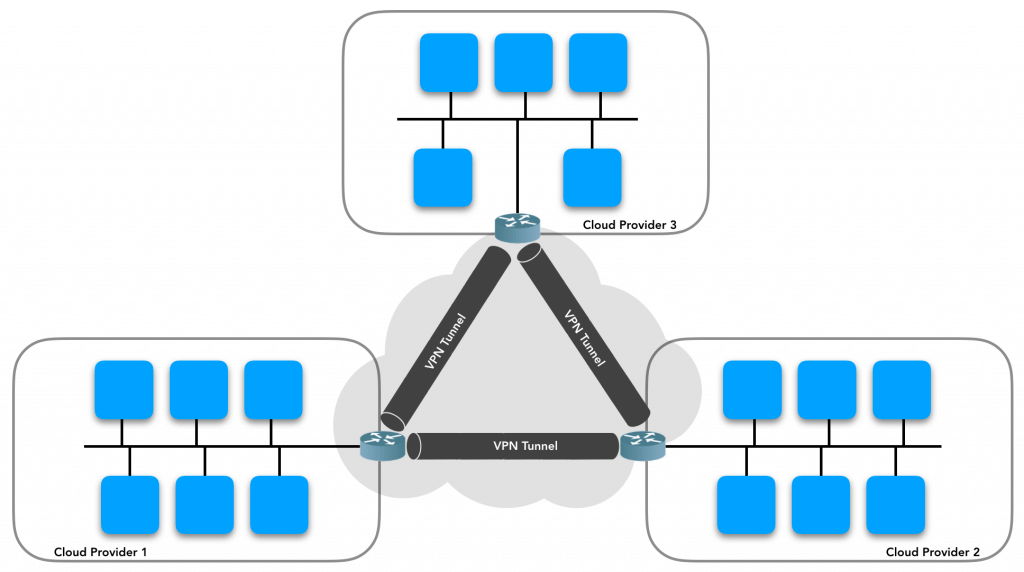Just recently, I was setting up Self-Managed K3s Kubernetes cluster on Azure VM, I had an requirement to include worker nodes from my home network as well as the from AWS. Coming from non n/w background , I had to do a bit of searching on the google and gets hands dirty to setup the connectivity :). So in this article I will take you through the steps I followed for the setup.
- I am using K3s Kubernetes distribution for this case. Set up the k3s cluster on the Azure VM. Use the below code snippet to install K3s master on the VM. Fill in the VM IP address and a secret pass of your choice.
curl -sfL https://get.k3s.io | INSTALL_K3S_EXEC="\
--cluster-init \
--write-kubeconfig ~/.kube/config \
--write-kubeconfig-mode 644 \
--tls-san <VMPublicIP> \
--node-taint CriticalAddonsOnly=true:NoExecute \
--token <SECRET>" \
INSTALL_K3S_VERSION="v1.19.2+k3s1" sh -
Copy the token from server, to setup the worker node at later stage(Ref1)sudo cat /var/lib/rancher/k3s/server/token
2. Go to Azure Portal, under your VNET create a Gateway subnet. Please be mindful of having ample of IPs for the subnet range. The gateway subnet contains the IP addresses that the virtual network gateway services use.
Also open the port 6443 in the inbound rules of the VNET. This is required for worker nodes to communicate with the k3s cluster inside Azure VM.
3. Create the Virtual Network Gateway and fill up the the details. Map the gateway subnet created in the previous step when you select the VNET. A new Public IP resource is required for the virtual network gateway. Put the default SKU.
4. On the worker node, which you wish to add execute below code snippets. This will install the tools for creating self signed Root certificates and derived private key and client certificates. Please add a USERNAME and PASSWORD.sudo apt install strongswan
sudo apt install strongswan-pki
sudo apt install libstrongswan-extra-plugins
ipsec pki --gen --outform pem > caKey.pem
ipsec pki --self --in caKey.pem --dn "CN=VPN CA" --ca --outform pem > caCert.pem
Copy the output of the below script, which will be used in configuring Virtual network gateway (Ref2)
openssl x509 -in caCert.pem -outform der | base64 -w0 ; echo
Generate private key and client certificate
export PASSWORD=""
export USERNAME=""
ipsec pki --gen --outform pem > "${USERNAME}Key.pem"
ipsec pki --pub --in "${USERNAME}Key.pem" | ipsec pki --issue --cacert caCert.pem --cakey caKey.pem --dn "CN=${USERNAME}" --san "${USERNAME}" --flag clientAuth --outform pem > "${USERNAME}Cert.pem"
openssl pkcs12 -in "${USERNAME}Cert.pem" -inkey "${USERNAME}Key.pem" -certfile caCert.pem -export -out "${USERNAME}.p12" -password "pass:${PASSWORD}"
6. Download the VPN client from the Azure Portal
7. Extract the zip on the worker node and traverse to Open VPN folder. Open the *.ovpn and paste the contents of private key and client certificate (not the files starting with ca*) and then save it.
8. Run the OpenVPN Client with referring the ovpn config filesudo openvpn --config <name and path of your VPN profile file> &
9. Setup the K3s on the worker node with the below command. Please note on the token that we copied from Azure VM.curl -sfL https://get.k3s.io | K3S_URL=https://<VMPublicIP>:6443 \
K3S_NODE_NAME=rpi-workernode \
INSTALL_K3S_VERSION="v1.19.2+k3s1" \
K3S_TOKEN=<Ref1> \
sh -
Finally you have a running Kubernetes cluster with remote worker nodes.
On enterprise level, we would normally purchase the certificate from Certificate Authority like GlobalSign, DigiCert etc and use it. The certificate used in the article is self signed. Hope this article finds useful to anyone who having similar case.

